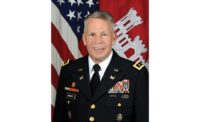
Bechtel was awarded a contract February 28 by Sicona Battery Technologies to perform an engineering study for a U.S. manufacturing plant that will produce battery anode components needed for electric vehicles.
It's one of many projects where major engineering firms and engineer-procure-construct contractors are being relied upon by clients hoping to swiftly create the infrastructure to both build and maintain a rapidly growing fleet of EVs on the road.
"We've had a really pretty incredible beginning in terms of new projects both in the EV battery space and in the semiconductor space," says Catherine Hunt Ryan, president of Bechtel's manufacturing and technology group and a Bechtel executive director.
As part of the new work, Bechtel will assess what is needed to plan the construction of a battery component manufacturing plant—optimizing manufacturing area designs, design requirements, utilities, equipment and materials and developing a project cost estimate.
“Due to significant interest in our materials from North American automotive companies, we are focusing our efforts on building Sicona’s first commercial-scale manufacturing plant in the U.S.,” says Christiaan Jordaan, CEO and founder of Sicona. “We are excited to work with Bechtel to make our first U.S. plant a reality."
The EPC is also working on the distributed EV charging infrastructure project with First Student, the nation’s largest school bus operator. Many school districts are already setting a date for all of their buses to be electric vehicles, and to qualify for Environmental Protection Administration funding to help in the shift, with some planning to be there by as early as 2035.
Multiple Challenges
Hunt Ryan says that while the challenge posed by infrastructure for anode and cathode battery fabrication plants is unique, there are lessons learned that can be applied from Bechtel's work in cellular phone infrastructure.
"The growth of fiber deployment, the rise of cellular towers: that's all distributed infrastructure - smaller units that are delivered in a programmatic way at scale,” she says. "It includes everything from permitting to rapid technology transformation. There's actually a number of lessons, and we've been, as a company, very active in the communications sector. Is it new to put in charging infrastructure in the U.S. and elsewhere? Absolutely. But does it share common characteristics with with distributed infrastructure like communications infrastructure from a few decades ago? Absolutely, as well."
The Biden administration has also made it clear that it expects production of batteries and vehicle components to happen in the U.S. In order to qualify for federal funding as part of the Inflation Reduction Act, 55% of the cost of EV charging station components must come from U.S. manufacturers.
Creating a Circular Model
Arup recently released a report, Circular Batteries: Circular Business Models for the Lithium-Ion Battery Industry, that identified $4.5 billion in growth opportunities for manufacturers that use such a circular business model. In developing the report, Arup engaged major manufacturers and leaders in the electric vehicle industry to shed light on the implications of batteries and the challenges of a linear supply chain.
"We found that the key to cost effectiveness and positive impact on society was to 'do more and better with less,'" says Cole Roberts, Arup’s Americas west energy leader and a principal in the firm’s San Francisco office. "From these interviews, we outlined actions for policymakers, investors and the larger industry that showcase how we can all work together to create a more circular supply chain."

Those included implementing financial incentives for circular production, creating policy that spurs the demand for circular product purchasing and designing facilities for reuse and disassembly, as well as the intake of circular resources and creating investment schemes around battery manufacturing for circular electric vehicle production.
Arup Senior Geospatial Analyst Samantha Lustado, based in Los Angeles, worked with California utility providers and the Los Angeles Cleantech Incubator (LACI) to create a web-based, site-suitability tool for EV charging stations called Charge4All. Using GIS technology, Charge4All analyzed data on transportation and energy networks, demographics and EV adoption to identify areas within Los Angeles where EV chargers will be needed as adoption increase.
In 2020, California Gov. Gavin Newsom (D) signed an executive order that effectively eliminates the sale of gas-powered vehicles in the state by 2035. Charge4All was created as a decision-support tool for elected officials, utility executives and local communities.
In addition to helping inform officials in California, Arup has also worked with with the Pittsburgh Department of City Planning's sustainability and resilience team to advance the city's vision for EV infrastructure. Arup pulled data from public and privately sourced platforms and used Charge4All to perform several geospatial analyses, helping identify potential installation sites that would satisfy utilization and equity needs. Both citywide and detailed curbside analyses were run, providing insight at multiple scales.
The development of the solution is still underway, Lustado says, and the Arup team is working on best approaches to scale its use for cities, organizations, and whole states. They are now looking beyond the siting of accelerated and more equitable charging, which was the original goal of Charge4All, and looking at the bigger picture of an end-to-end solution for any organization to transition their vehicles and mobility. Arup also developed a digital solution called Charge4Fleets that helps streamline the conversion of existing fleets to all-electric.
"Our goal is to help create equitable and accessible electric vehicle charging, while also helping organizations transition their fleets, understand the current and future electric vehicle demands and find optimal locations for construction electric vehicle infrastructure and facilities," Lustado says.
She adds that organizations that manage utility information can understandably be hesitant to give access to their data. Some states, like California, have entities that share utility information at a scale that covers large areas, but that can only take an assessment so far. Establishing trusted partnerships with those strategizing around the EV transition will be key.
Supply Chain Challenges to Infrastructure Development
Hunt Ryan says that while the challenges their clients are working to solve—whether they involve semiconductor fabrication facilities, battery production or the broader EV space of charging infrastructure and stations—what is relatable is scale and experience.
"[Bechtel] has 125 years of experience in managing complexity for capital projects," she says. "So, whether that complexity derives from design, construction, logistics, supply chain, or bringing all those things together, we have that experience."
Hunt Ryan says the full value chain of electric vehicles from battery component materials to cell packs, battery recycling to electric vehicle charging infrastructure and the data centers that store the information from an EV's onboard computers have been in the Bechtel manufacturing group's scope in the last year.
"It's been a pretty exciting year," she says.





